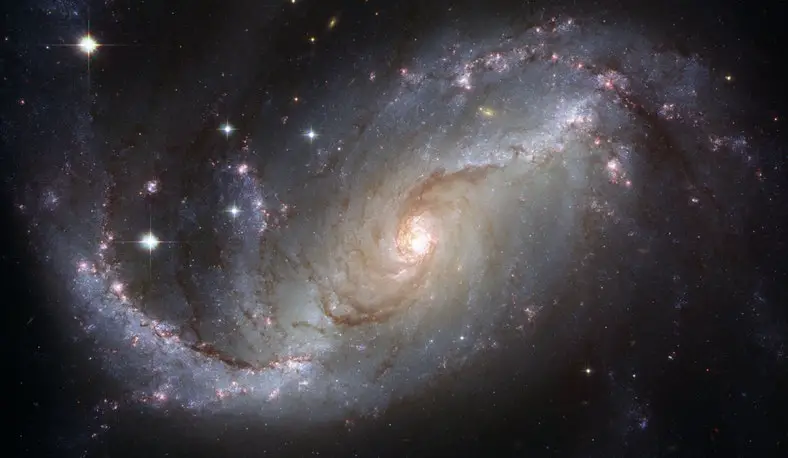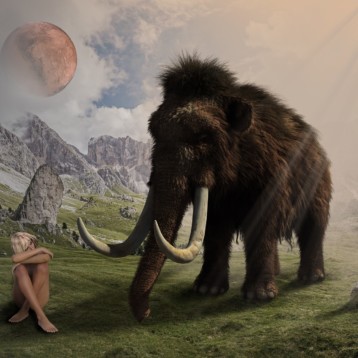
The genius of Albert Einstein has been proven again. His theory of relativity has been attacked, ridiculed and confirmed over the last 100 years. Once upon a time, Albert Einstein postulated that massive gravitational objects that warp the time and space fabric literally exist. These massive anomalies (something that deviates from what is standard, normal, or expected.) are known as black holes.
On April 10, the EHT telescope unveiled the first ever seen black hole found in the M87 galaxy which is a mere 55 million light years from earth and it is a giant elliptical galaxy. There is no one single telescope stationed on earth that is powerful enough to capture the image from such a vast distance. The team had to coordinate with telescopes around the world to bring the image of the black hole to earth. In essence, to capture the image of the black hole physicists needed a telescope the size of the earth.
Stephen Hawking’s Radical Black Hole Theory
Stephen Hawking, world-renowned physicist, who passed away on March 14, 2018 at his home in England, according to deadorkicking.com, after living for more than 50 years with his disease. He put forth a theory about black holes that goes against Einstein’s theory on general relativity. Hawking, proposed in 1974, that black holes have an “apparent” horizon whereby light and matter could move across. These particles of light and matter would leave behind particles that could leave the black hole. These particles have become known as “Hawking’s radiation” but this theory has not been definitively proven to be true.
Scientists claim they have duplicated this radiation in hypothetical black holes known as “dummy holes”. This contradicts Einstein’s general theory of relativity which hypothesizes that no matter or light can escape a black hole once it crosses the event horizon. This is because the gravitational pull of the black hole is too strong and pulls light and matter into the black hole never to be seen again.
Definition of a Black Hole
A black hole is a place in space that is so packed with matter that this matter pulls with such strong gravitational pull that anything that comes near the event horizon ( was a hypothetical entrance to the black hole but now is reality because of this image) is pulled into the black hole never to be seen again. The gravitational pull of a black hole is so strong that the objects will be pulled from space-time as we know it into the black hole. It is hypothesized that within the black hole the natural law of physics do not operate according to the laws they operate by in the space-time continuum.
How big is a Black Hole?
Scientists postulate that black holes can be small, big or supermassive. They can be as small as one-atom wide but these small black holes have the mass of a mountain. Mass is known as how much matter is inside an object. “Stellar” black holes have 20 times more mass than our sun does and “Supermassive” black holes have more than 1 million times the mass of the sun.
The “EHT” black hole is the first image of a black hole man has ever seen. The event was accomplished by 8 telescopes, on 5 continents, supercomputers and hundreds of researchers and they had tons of data to sift through. This particular black hole is classified as a “supermassive” black hole and is said to be as wide as a solar system. “M87’s huge black hole mass makes it really a monster, even by supermassive black hole standards,” Sera Markoff, an astrophysicist at the University of Amsterdam, said at a press conference. “You’re basically looking at a supermassive black hole that’s almost the size of our entire Solar System.”
So, you can imagine the size of this black hole and the significance of the discovery. It is theorized that there is a black hole at the center of our galaxy which is the Milky Way but it has not been proven. This black hole is estimated by scientists to be 6.5 million times more massive than our sun and our sun’s mass is 1.989 × 10^30 kg. In other words, our minds cannot understand how big or how much this black hole weighs.
The EHT Super Massive Black Hole
The project director said this “Black holes are the most mysterious objects in the Universe,” Sheperd Doeleman, the project director of the Event Horizon Telescope, said at a press conference today before unveiling the image. “We’ve been at this for so long,” Doeleman said. “When you work at this field for a long time, you get a lot of intermediate results. We could have seen a blob — and we have seen blobs. We could have seen something that was unexpected. But we didn’t see anything that was unexpected. We saw something so true. We saw something that really had a ring to it.”
The image was encircled by an orange bright ring. The observers noticed in some earlier images of the galaxy that there was a major stream of plasma emitting from the black hole. They speculated that the matter never did reach the event hole after being absorbed into the event horizon. This seems to confirm the theory that any matter that enters the event horizon of the black hole that it will never appear in the space-time continuum again.
The black hole is spinning at a very fast rate the scientists also observed. It is also believed that the black hole is accelerating subatomic matter into the universe. Another interesting fact about the black hole is that it took 8 telescopes to observe the image. This equates to a telescope the size of the earth that was needed to discover the image of the black hole. Both of these facts were stated earlier in the article.
The observations took place in one week in April of 2017 but to filter through the data took months to complete. This extensive data equals 5,000 years of mp3 files. The black hole image was discovered before it was released but the observers put it through an extensive peer-review process before it was released to the public. It went through extensive analysis by researchers not involved with the project. This was to ensure objectivity in the interpretation of the image and the data related to it.
As we mentioned earlier it took months for the data to be analyzed and conclusions to be drawn. But the data analysis was not interpreted by humans but by supercomputers. The information may have been to complex and time-consuming for human minds to interpret. Davide Castelvecchi, noted that “a typical night will yield about as much data as a year’s worth of experiments at the Large Hadron Collider outside Geneva, Switzerland.” So, you can imagine the extent of the workload involved in bringing the black hole image to reality.
The 4 Main Goals of the Project
- Imaging a Black Hole
This involves some conjecture on the observer’s part because they did not collect all the data to image the black hole. They had “missing data” that they had to fill in by using algorithms which completed the data to make the image of the black hole possible to perceive. This information is missing because only a certain amount of light was collected from telescopes located around the world. It is fascinating the data the observers were able to collect and interpret from the beams of light the telescopes collected. Honestly, the image was partially made from conjecture because the observers did not have all the data to reflect a complete and accurate image of the black hole. So, this image is produced from the actual data and algorithms the scientists formulated based on the data they received.
- Confirm Einstein’s General Theory of Relativity
In this event, the General Theory of Relativity was confirmed with the imaging of this black hole. How? The black hole has such a dense and powerful gravitational field that it will not only bend space and time around it but it eats up matter, energy and even light. Einstein postulated that energy through motion and how it is distributed will bend and deform space and time. Planets, stars, and moons depending on their mass will bend time and space accordingly.
- Is Accretion Really Happening?
Contrary to popular belief that black holes just pull in a matter like it was without any effort is wrong. In fact, it is quite difficult for matter to be drawn into the black hole. Matter if it is close to the black hole but only feels gravity it can orbit a black hole indefinitely. When the matter forms a disk around the black hole then the process for the matter to be pulled into the black hole begins.
The different parts of the disk rub against each other causing friction. (It would be like rubbing your hands together) This, in turn, causes heat to be generated from the matter as it loses energy. The matter turns into a gas and forms a hot disk over the black hole. The matter loses so much energy it falls into the black hole. The black hole grows bigger as it eats up the falling matter.
- Confirming Jet Genesis and Collimation
This is the basic process of jet genesis and collimation. The jet streams will form what is collimation. This is when the jet streams of plasma line up perfectly and shoot out of the black hole. The jet streams shooting out from the black hole in Galaxy M87 are 5,000 light-years long and the tips of the jet stream diffuse matter up to 250 thousand light years away from the jet streams.
—
The first real imaging of a black hole has brought the phenomenon out of the theoretical realm into the practical realm. It is history making because it is the first black hole ever caught on telescopic cameras. The black hole has been postulated as existing and observers have proven its existence through different data caught and analyzed. This image shows that black holes exist and they are an integral part of the time and space fabric.










